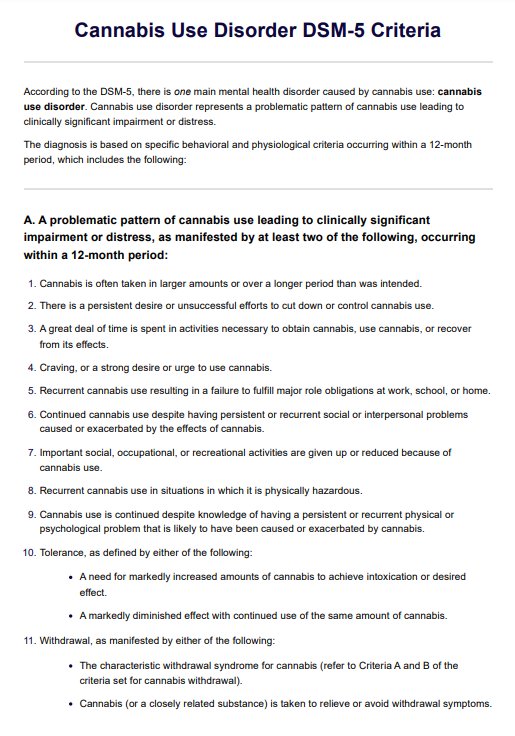Cannabis use disorder is a mental health condition characterized by a problematic pattern of cannabis use leading to clinically significant impairment or distress.

Cannabis Use Disorder DSM-5 Criteria
Access a detailed guide to the Cannabis Use Disorder DSM-5 Criteria, including key symptoms and clinical considerations.
Use Template
Cannabis Use Disorder DSM-5 Criteria Template
Commonly asked questions
Symptoms include cravings, difficulty controlling use, withdrawal symptoms, and continued use despite negative impacts on personal or professional life.
Treatment involves behavioral therapies, lifestyle modifications, support groups, and sometimes medications to manage withdrawal symptoms and co-occurring conditions.
EHR and practice management software
Get started for free
*No credit card required
Free
$0/usd
Unlimited clients
Telehealth
1GB of storage
Client portal text
Automated billing and online payments











